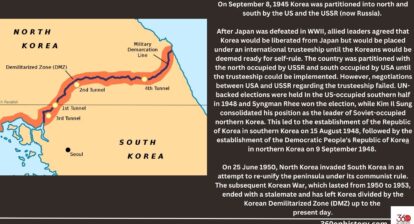A new study says that a population hub out of Africa can explain Eurasian lineages of Humans.
Homo sapiens, human beings – we – left Africa many times since we branched out of other Homo species around 300,000 years ago. Fossil evidence indicate some early attempts between 210,000 and 177,000 years ago but these efforts did not succeed. There were possibly many other similar journeys out of Africa, many of which failed to establish sustainable populations in Eurasia. They continued to do this again and again for at least 400,000 years according to a study from 2021, ” findings, including the oldest dated hominin occupations in Arabia, reveal at least five hominin expansions into the Arabian interior, coinciding with brief ‘green’ windows of reduced aridity approximately 400, 300, 200, 130–75 and 55 thousand years ago.”
International archaeologists and geneticists from Italy, Germany, and Estonia analyzed paleolithic DNA to better understand the relationships between these different migratory groups, published in Genome Biology and Evolution. According to the authors, the colonisation of East and West Eurasia was characterised by several events of expansion and local extinction from a population Hub, where the ancestors of all Eurasians thrived after they first ventured out of Africa ~70-60 thousand years ago. An early, failed Homo sapiens expansion took place sometime earlier than 45 thousand years ago. The only representative of that migration, that is related to neither modern Europeans nor to modern Asians, has been recovered from Zlatý kůň, in present day Czech Republic and it is yet unclear how widespread it was.”
“Then, around 45 kya, a new expansion emanated from the Hub and colonised a wide area spanning from Europe to East Asia and Oceania and is associated with a mode of producing stone tools known as Initial Upper Paleolithic” says Leonardo Vallini, first Author of the study.
In Asia this population thrived and ultimately led to the formation of modern populations of East Asia. On the other hand the European representatives of this expansion declined and largely disappeared, leaving behind a few remains like those found in the Bacho Kiro cave (Bulgaria), the elusive Oase individual from Romania and a few other remains.
“It is curious to note that, around the same time, also the last Neanderthals went extinct”, says Giulia Marciani, from the University of Bologna and coauthor of the study.
“Finally, one last expansion occurred sometime earlier than 38 kya and re-colonized Europe from the same population Hub, whose location is yet to be clarified”, summarises Luca Pagani, senior author of the study. “Although even in Europe there were occasional interactions with survivors of the previous wave, an extensive and generalized admixture between the two waves only took place in Siberia where it gave rise to a peculiar ancestry known as Ancestral North Eurasian, which eventually contributed to the ancestry of Native Americans”.
This later migration also had a different cultural stone tool assembly named Upper Paleolithic that characterises the main European palaeolithic sites. “It is noteworthy that, from a cultural perspective, these novel stone tools have often been depicted as an independent assembly rather than a local development of pre-existing technologies in Europe: it is refreshing to see that genetic and cultural information can be reconciled under a comprehensive scenario”, said coauther Telmo Pievani, from the University of Padova.
As to the Hub, the authors conclude, “we remain oblivious about the precise location of the inferred population Hub, although North Africa or West Asia seems the most plausible candidates.” They opine that more efforts are needed to discover the location of the Hub, as well as to find out the causes of these movements of Homo sapiens out of Africa.
DOI 10.1093/gbe/evac045







